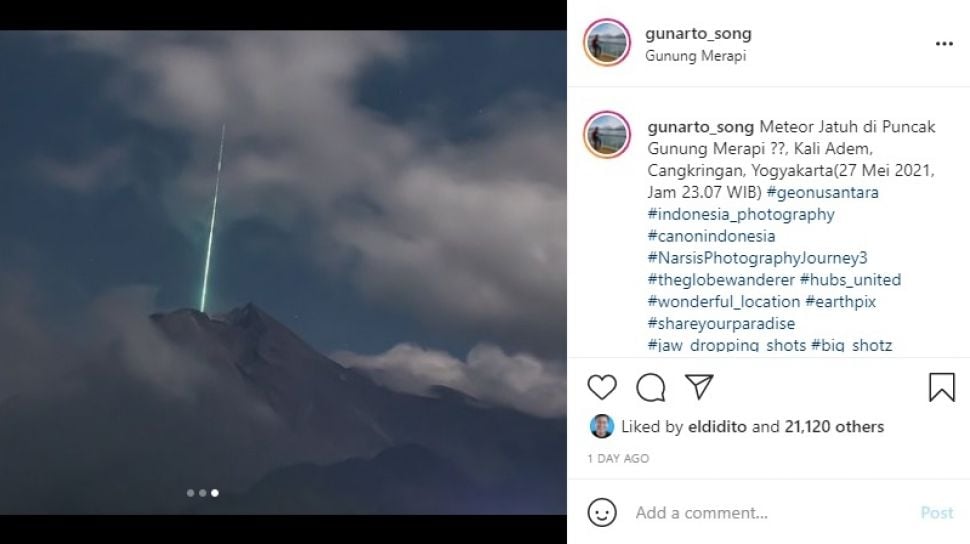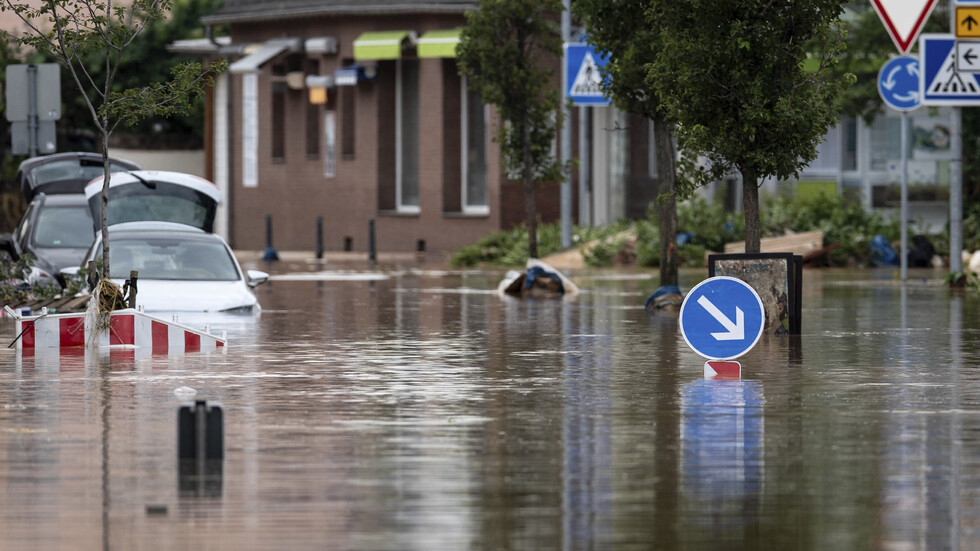Suara.com – Researcher at the Center for Science and Space of the National Institute of Aeronautics and Space (Eight) Andi Pangerang said the flash of light that appeared in the sky of Yogyakarta was incandescent meteor, which is a sporadic meteor.
“When the meteor was seen, there was no sound of any boom. This meteor was also seen by several witnesses in Yogyakarta and surrounding areas such as Sukoharjo, Klaten and Sragen which looked reddish in color,” Andi said in his statement, in Jakarta, Thursday.
On Monday night (12/7/2021), at around 22.00 WIB, another flash of meteor or fireball was immortalized in Yogyakarta by Aryo Kamandanu from Bantul.
Andi said the phenomenon of falling meteors does not always come from meteor showers, both major (> 10 meteors per hour) and minor (< 10 meteors per hour). Meteors that do not originate from meteor showers are also known as sporadic meteors.
Also Read:
Amazing Aphelion Phenomenon, Here Are Facts and Its Impact on Earth
According to Andi, the red color that appears on the meteor most likely comes from oxygen and nitrogen in the Earth’s atmosphere.
“These fireballs are generally 20-60 centimeters or 1-3 fists in size and because of their small size, the fireball will be completely burned by the Earth’s atmosphere, making it impossible to fall to the Earth’s surface as a meteorite or meteorite,” he said.
In the photo taken by Aryo Kamandanu which can be seen on his Instagram account at http://instagram.com/aryo.akise, the meteor appears to be west of the Crux constellation (South Cross/Layang-layang/Gubug Penceng) which was at that time in an altitude of 10.9°-14.9° above the horizon and already in the direction of 207.9°-213.9° or the South-Southwest to Southwest direction.
In addition, the meteor appears to have crossed the two stars in the constellation Centarus, namely Gamma Centauri and Delta Centauri, which are in the direction of 219.6°-221.1° or southwest. Thus, it can be concluded that the meteor appears from the southwest.
Andi said that with clear sky conditions, people can see meteors falling with greater intensity and size, especially when the peak of the meteor shower is in progress. [Antara]
Also Read:
Again, Flashes of Green Light in the Night Sky of Jogja Shock the Public
– .


